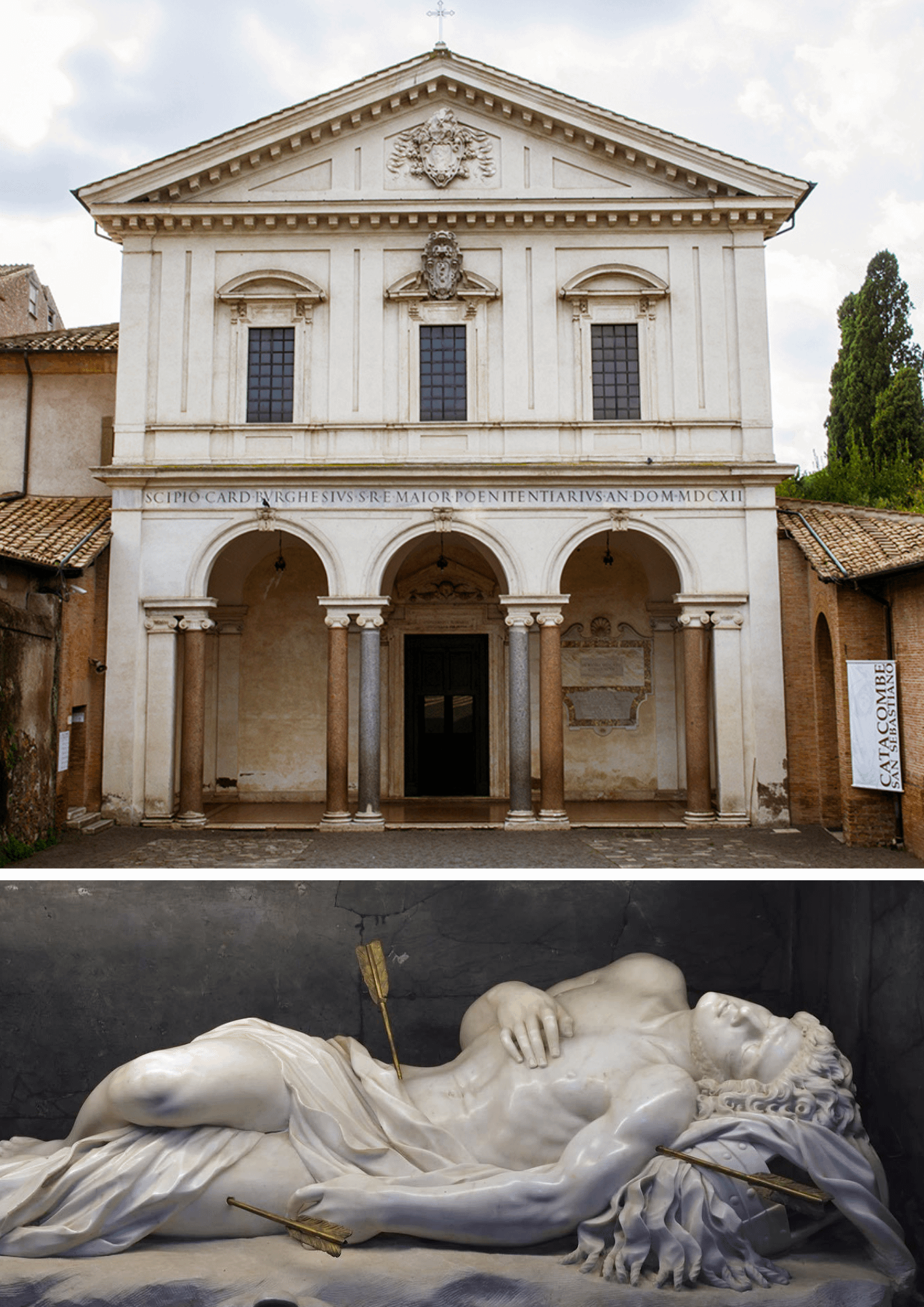The basilica Apostolorum
The basilica of St. Sebastian is between the 3rd and the 4th mile of the ancient Appian Way and originally named "Basilica Apostolorum."
It was built at the behest of the Emperor Constantine in the 4th century AD in honor of the apostles Peter and Paul. In fact, according to tradition, during Valerian's persecutions in the 3rd century CE, relics of the Apostles were moved here and venerated for about fifty years. Over the centuries, veneration to St. Sebastian has prevailed in the naming of the cemetery and basilica, now dedicated to him "vox populi".
In 1608 Cardinal Scipione Borghese undertook a complete remodeling of the basilica and crypt of San Sebastiano, based on plans by Flaminio Ponzio and under the artistic direction of Guido Reni.
The restoration was completed by Vasanzio while the facade is dated 1612 and is by Ponzio. The basilica was restored by occupying only the nave of the decaying ancient Constantinian circiform. The church has a remarkable carved wooden ceiling (made by Annibale Durante on the drawing traditionally attributed to Giovanni Vasanzio in 1612).
At the entrance, on the left wall, it is affixed the almost intact carme, dedicated by Pope Damasus to the martyr Eutychius, which represents one of the most important examples of the famous Philochalian calligraphy.
The altar with the urn containing the remains of St. Sebastian is next, and its statue, sculpted by Giuseppe Giorgetti, depicts the lying saint pierced by the arrows of martyrdom.
Entrances on either side of the modern church lead to the outer nave. Today only part of the ambulatory is preserved, consisting of the rooms to the right and left of the present basilica. The first one, which gives access to the catacombs, houses a rich collection of local sarcophagi, known as the "Museum of Sarcophagi."
The left room is occupied by the "Chapel of the Crucifix" and the epigraphic museum, which is under restoration and closed to the public.
Following the high altar is the Albani Chapel, erected by Pope Clement XI for his family in 1706. It is covered in fine polychrome marble with decorations dedicated to the martyred pope St. Fabian (236-250). Also on the right side of the nave is the "Chapel of Relics," which was commissioned by Maximilian, Duke of Bavaria, in 1625: it preserves an arrow from the martyrdom of St. Sebastian and the column to which he was bound.
In the center of the said chapel is preserved the stone of the "Quo Vadis?" episode, where Christ's footprints are imprinted.
